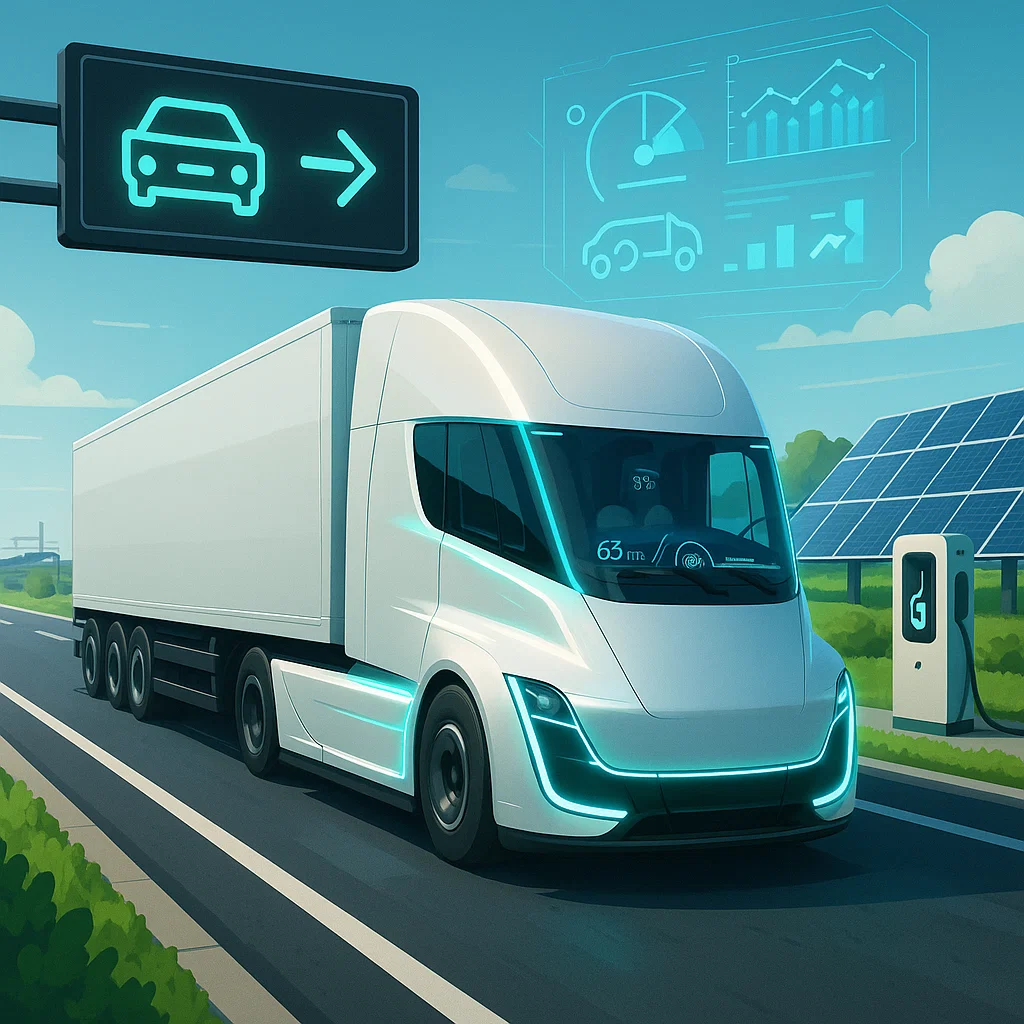The trucking industry stands at a crossroads in 2025, fueled by rapid technological innovation, environmental urgency, regulatory evolution, and volatile market conditions. As logistics companies, drivers, and fleet managers navigate this dynamic landscape, staying ahead means understanding and adapting to the key trends that are reshaping the way goods move across the country.
Here are the top five trends transforming the trucking industry this year:
1. AI and Automation Redefining Fleet Operations
Artificial Intelligence (AI) and automation are becoming core components of modern fleet management. In 2025, companies are increasingly leveraging AI to optimize routes, monitor driver behavior, predict maintenance needs, and even automate administrative tasks like compliance reporting.
Machine learning algorithms analyze real-time traffic, weather conditions, and fuel prices to suggest the most efficient routes—minimizing costs and delays. Meanwhile, AI-powered dash cams and telematics systems help ensure driver safety by providing real-time alerts for drowsiness, harsh braking, or speeding.
On the automation front, semi-autonomous driving features are being deployed in pilot programs. While fully autonomous trucks are still in the experimental stage, systems that handle highway driving or platooning (coordinated travel in convoys) are showing promise, reducing driver fatigue and increasing fuel efficiency.
2. Sustainability and the Rise of Electric Trucks
Sustainability is no longer optional—it’s a mandate. In response to growing environmental concerns and government mandates, electric trucks are gaining traction in 2025. Companies like Tesla, Volvo, and Freightliner have made significant progress, offering electric Class 8 trucks with improved range, payload capacity, and fast-charging capabilities.
Beyond electrification, fleets are exploring alternative fuels such as hydrogen and renewable natural gas (RNG), especially for long-haul routes where EV infrastructure is still limited.
Many states now offer tax incentives and grants for companies transitioning to zero-emission vehicles. As corporate sustainability reporting becomes more rigorous, early adopters of green trucking technologies are finding both regulatory and reputational benefits.

3. Evolving Regulations and Compliance Pressures
2025 is witnessing a shift in regulatory landscapes. Governments are tightening emissions standards, mandating electronic logging devices (ELDs), and introducing stricter driver qualification criteria. The U.S. Department of Transportation (DOT) and Federal Motor Carrier Safety Administration (FMCSA) continue to push for digital compliance, making electronic systems a necessity rather than a luxury.
Additionally, proposed updates to Hours of Service (HOS) regulations and the Drug & Alcohol Clearinghouse are influencing hiring and scheduling practices. Fleets must stay nimble and informed to avoid penalties and ensure smooth audits.
To manage this growing complexity, many operators are investing in compliance software platforms that consolidate reporting, automate documentation, and flag issues proactively.
4. Labor Challenges and the Evolving Driver Workforce
The driver shortage remains one of the industry’s most pressing challenges. However, in 2025, the narrative is evolving. More carriers are launching recruitment initiatives targeting underrepresented groups, including women and younger drivers. Apprenticeship programs and CDL training subsidies are helping lower the barrier to entry.
Simultaneously, new roles are emerging. The rise of autonomous technologies is giving birth to “fleet technicians” who manage, supervise, and troubleshoot AI-driven systems from remote command centers. Driver-assist vehicles still need humans in the cab, but their role is shifting from manual operation to high-level oversight.
Improving driver retention is also a top priority. Companies are enhancing benefits, raising pay, and offering flexible routes that allow for better work-life balance.
5. Market Shifts and Supply Chain Realignments
The post-pandemic economy continues to reshape freight demand and distribution patterns. In 2025, e-commerce remains a driving force, but supply chains are being restructured to increase resilience. Nearshoring and regional distribution centers are replacing global sourcing strategies, leading to shorter, more frequent hauls.
Spot market volatility has prompted many carriers to adopt more agile pricing models and build stronger relationships with shippers to ensure consistent freight flow. Digital freight platforms are also growing in popularity, using real-time data to match loads with available capacity faster and more efficiently.
With macroeconomic uncertainty still in play, smart logistics companies are investing in demand forecasting tools and diversifying customer bases to weather fluctuations.
Final Thoughts
The road ahead for trucking is full of challenges—but also immense opportunity. Those who embrace innovation, prioritize sustainability, and adapt to shifting regulatory and labor landscapes will be the industry leaders of tomorrow.
As 2025 unfolds, the key to success will lie in agility: the ability to evolve operations, technology, and strategies in step with a rapidly changing world.



